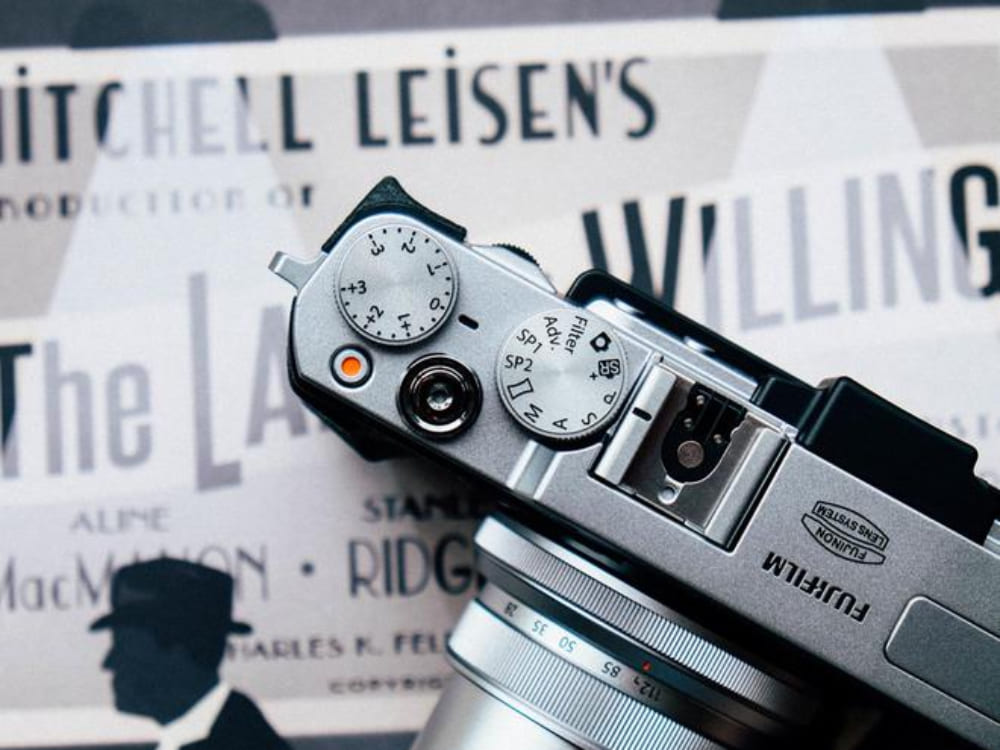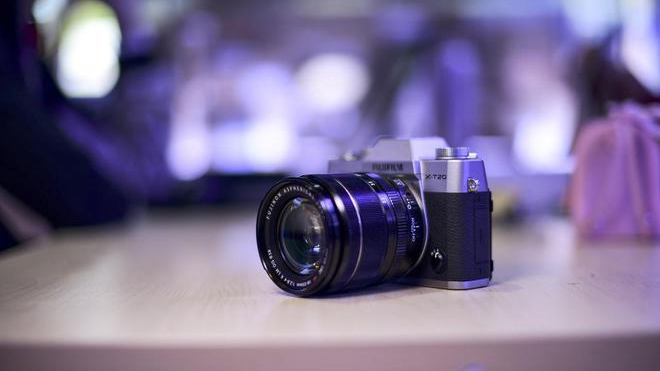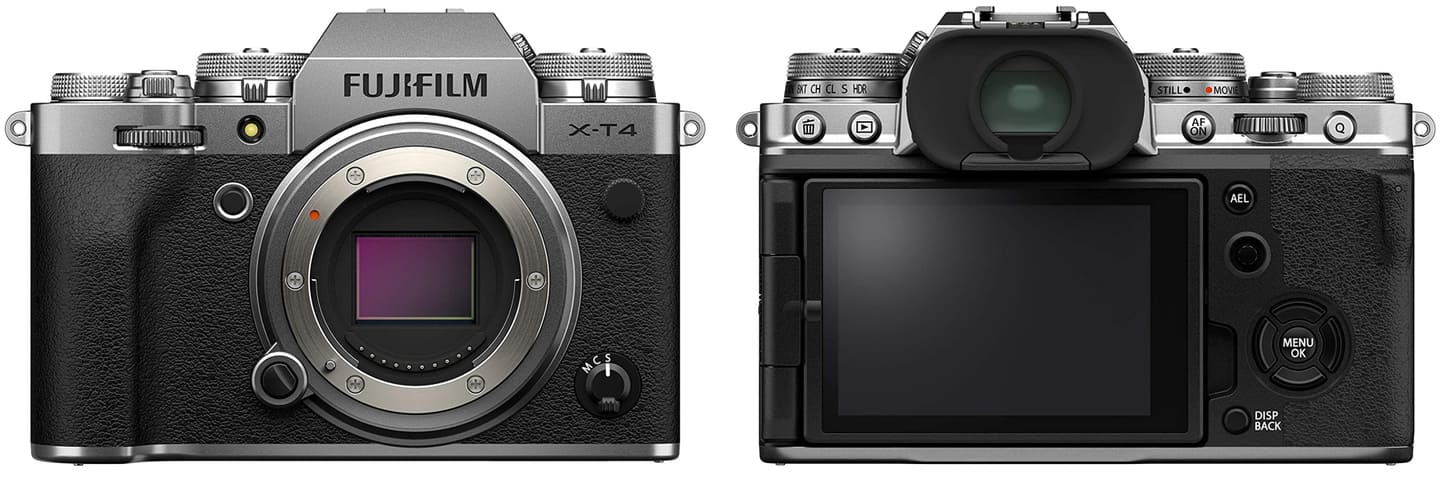Fujifilm Camera Buying Guide: Which One Is Right for You?
Fuji cameras have long captivated photography enthusiasts with their distinctive design and exceptional color reproduction. They're more than just tools—they represent a philosophy: prioritizing the art of imagery over a mere checklist of technical specs.
If you're drawn to Fujifilm cameras but unsure which model is right for you, this guide is here to help.
In this article, we'll give you a comprehensive look at Fuji's lineup, helping you discover the perfect camera to match your needs. Let's dive in and explore the world of Fuji cameras!

In this article, you will learn:
- Why Does Fuji Camera Have So Many Fans?
- Fuji Camera Lineup Overview
- Fuji GFX Series: Medium Format Mirrorless
- Fuji X Series: APS-C Sensor Cameras
- Conclusion
Why Does Fuji Camera Have So Many Fans?
Among the numerous camera brands today, Sony, Canon, and Nikon have the broadest audience. However, there is one brand that boasts a significant number of devoted followers — Fuji cameras.
In comparison to other brands, Fuji cameras may not excel in sensor technology, autofocus speed, or video performance. Additionally, Fuji cameras are typically not the cheapest in their class.
So why do so many people choose Fujifilm cameras?
Since Fujifilm may not match up in performance with the other three major brands, it has taken a different approach by focusing on design. This results in Fuji cameras having a retro style appearance and providing a user experience reminiscent of traditional film cameras.

This design emphasis isn't just about aesthetics; it aims to offer a sense of returning to traditional photography during use. This gives using a Fuji camera a special sense of "ritual."
This experiential aspect is immeasurable in terms of performance and price. It's also why many individuals with film photography experience adore Fuji cameras.
Of course, Fuji cameras have plenty of other standout features that users love. For example, they're incredibly compact and lightweight, and they offer a variety of Film Simulation modes inspired by classic film stocks.
Fujifilm cameras frequently enhance the functionality and user experience of older models through firmware updates, showing a commitment to their existing user base.
This dedication and feedback have earned Fuji cameras a strong reputation in the photography community. Hence, you'll notice a unique phenomenon among Fuji camera users—extremely high brand loyalty.

Fuji Camera Lineup Overview
Fuji digital cameras currently consist of two main series: the GFX series and the X series.
- The GFX series stands as Fuji's most high-end and expensive lineup, featuring medium format mirrorless cameras with prices starting at $3000.
- On the other hand, the X series is Fuji's most popular and widespread lineup, including both mirrorless and fixed-lens rangefinder cameras. All cameras in the X series utilize APS-C sized sensors.
Additionally, here are three key facts about Fujifilm cameras that you should know:
1. Fuji Does Not Produce DSLR Cameras
All interchangeable lens cameras currently offered by Fuji are mirrorless, not DSLRs.
The last Fuji DSLR camera can be traced back to the FinePix IS Pro released in 2007. Since then, Fuji has not released any DSLR cameras.
Further Reading:
2. Fuji Does Not Have Full-Frame Cameras
Full-frame cameras feature the mainstream sensor size in the current market. Major brands like Canon, Sony, Nikon, Panasonic, and Leica opt for full-frame sensors in their high-end products.
However, Fuji takes a different path and currently offers products with APS-C size sensors (smaller than full-frame) and medium format sensors (larger than full-frame).
3. Fuji Cameras' Distinctive Feature — Film Simulation Modes
As a renowned film manufacturer, Fuji equips its digital cameras with Film Simulation modes, allowing the camera to produce photos and videos that directly emulate the look of Fuji film photography.
All currently produced and sold Fuji cameras support this feature. However, the specific film styles and quantity included may vary among different models, which can be checked in the specifications section on Fuji's official product pages.

Fuji GFX Series: Medium Format Mirrorless
The GFX series represents Fujifilm's top-tier product lineup, featuring medium format sensors with prices starting at $3000.
Sensor format refers to the physical size of the camera sensor. Larger sensors can typically capture more light signals, theoretically leading to better image quality.
In the hierarchy of common camera sensor sizes: medium format > full-frame > APS-C > one inch.
This means that purely from the perspective of sensor size and image quality theory, Fuji's GFX mirrorless cameras are considered even more high-end than the top-tier offerings from Canon, Sony, and Nikon.
The GFX series is divided into two sub-series: GFX 100 and GFX 50, with the main difference being the pixel count. The GFX 100 series cameras have around 100 million pixels, while the GFX 50 series cameras have approximately 50 million pixels.
1. Fuji GFX 100
Within the GFX 100 series, there are currently two models: the GFX 100 and the GFX 100S. The former was released in 2019, while the latter was launched in 2021.
The GFX 100S is not an upgraded version of the GFX 100. It features a more portable body, enhanced stabilization, additional film simulation styles, and a more budget-friendly price tag.
However, it does have some drawbacks in terms of viewfinder and battery life.
2. Fuji GFX 50
The GFX50 series consists of three models: the GFX 50R, GFX50S, and GFX 50SII. The GFX 50R follows a rangefinder camera design (R stands for "Rangefinder"), while the GFX 50S features a DSLR design (S stands for "Single-lens reflex").
The GFX 50S II is the second-generation product and the latest in the GFX series, introduced in September 2021. It offers superior image quality and pixel count compared to most full-frame cameras, with a relatively affordable price tag (for a medium format camera).
However, in terms of autofocus, burst shooting, and video capabilities, the GFX 50S II does not have a significant advantage over other brands' full-frame mirrorless cameras in the same price range.
Therefore, potential buyers should carefully consider their shooting needs before making a purchase.
Fuji X Series: APS-C Sensor Cameras
All cameras in the Fuji X series, whether high-end or entry-level, feature APS-C sensors.
Many photography enthusiasts are drawn to Fujifilm cameras for their aesthetics. Let's take a look at the various cameras in the Fuji X series based on their designs.
1. DSLR-Style Design
The DSLR-style design refers to cameras that resemble DSLRs, with the viewfinder positioned relatively centrally on the camera's back. This series includes the X-H, X-T, and X-S branches.

【X-H Series】
The X-H series is the most high-end flagship range in the Fuji X mirrorless lineup, excelling in both photography and videography, equipped with Fujifilm's latest technology and highest specifications. The latest models are the X-H2 and X-H2S released in 2022.
Among these two cameras, the X-H2 focuses on high resolution, featuring 40 million static pixels and 8K video recording capabilities.
The X-H2S emphasizes speed, supporting a burst shooting speed of 40 frames per second and a high frame rate of 4K recording at 120FPS.
You can choose between these two based on your specific needs. Whichever you pick, it stands as one of the best and most premium APS-C sensor cameras available on the market.
【X-T Series】
The X-T series is Fuji's most classic and traditional lineup, with many popular Fujifilm mirrorless cameras falling under this series.
Within the X-T series, there are three tiers – high, mid, and low – following a setup where "shorter model numbers indicate higher-end models": single-digit models are high-end, double-digit models are mid-range, and triple-digit models are entry-level.
Single-digit models represent the second flagship tier, just below the X-H series. The latest model is the X-T5 released in 2022.
The X-T5 is slightly downgraded from the X-H2, omitting features like 8K video, ProRes video encoding, CFe card slot, top display, body cooling fan, while retaining the same core components, offering similar image quality, autofocus, burst shooting, and stabilization performance.
Double-digit models are mid-range models, with the latest being the X-T30 II released in 2021 (now discontinued).
The X-T30 II is a minor update to the 2019 X-T30, focusing on improved screen resolution, enhanced autofocus performance, and algorithm enhancements, sharing the same sensor and processor as the X-T4.
Triple-digit models are entry-level models, with the latest being the X-T200 released in 2020 (now discontinued).
Triple-digit products do not come with Fujifilm's distinctive X-Trans sensor technology and differ significantly from the mid-range and high-end offerings in the lineup.
【X-S Series】
The Fuji X-S series represents a mid to high-end product line that features a more modern design aesthetic compared to the retro look of the Fuji X-T series. Currently, the X-S10 is the only model in the X-S series.
The X-S10 utilizes the same sensor and processor as the X-T4, offering similar pixel count, image quality, autofocus, and burst shooting performance.
However, its image stabilization is slightly weaker, and it comes with reduced video capabilities, as well as lower-quality screen and viewfinder effects. Additionally, it features a single card slot design.
2. Rangefinder-Style Design
The rangefinder-style design refers to cameras that resemble rangefinder cameras, with no protrusion on the top of the camera body like DSLRs, and the viewfinder positioned at the top left corner on the back.
When comparing rangefinder-style and DSLR-style designs, the difference lies only in the external appearance, with no absolute superiority or inferiority in performance. It's best to choose a design that you personally like.

The rangefinder-style category includes the X-Pro, X-E, and X-A branches, each with distinct characteristics:
- In the X-Pro series, the viewfinder at the top left corner of the back can be either electronic or optical, making it not just a rangefinder-style camera but a true rangefinder camera (which can still be categorized as a mirrorless camera).
- The X-E series features an electronic viewfinder only at the top left corner, making it a mirrorless camera with a rangefinder-style design rather than a true rangefinder camera.
- The X-A series lacks a viewfinder at the top left corner altogether, relying solely on the screen for framing, making it more of a straightforward mirrorless camera.
【X-Pro Series】
The X-Pro series is Fujifilm's high-end lineup, with the latest model being the X-Pro3 released in 2019.
The X-Pro3 shares almost identical specs with the X-T3, but it's not merely a rehashed version. The X-Pro series follows a niche path, emphasizing a unique personality and a nostalgic connection to film and rangefinder cameras.
For instance, the X-Pro3 retains the rangefinder-style optical viewfinder from the film era, and its screen is not directly visible on the back; instead, it needs to be flipped down to reveal. There's a small window on the back displaying a faux film canister, giving the illusion of having film loaded inside the camera.
Overall, the X-Pro3 is more like a piece of art for artistic and nostalgic photography enthusiasts to appreciate and collect. It's not the ideal tool for professional photographers making a living nor practical for regular family travel. It's recommended to carefully consider these aspects before making a purchase.
【X-E Series】
The X-E series is Fuji's mid-range lineup, with the latest model being the X-E4 released in 2021 (now discontinued), combining some features from the X-T30 and X-S10.
Compared to the X-Pro series, the X-E series is more practical in design and is priced more affordably, offering good value for the money.
【X-A Series】
The X-A series serves as Fuji's entry-level lineup, with models available in single and double-digit variations.
The latest single-digit model in the X-A series is the X-A7 released in 2019 (now discontinued), sharing many similarities with the X-T200 but differing in body design.
The double-digit models in the X-A series represent Fuji's most basic mirrorless cameras, with production likely ending after 2018. These models have lower specifications and are generally not recommended for consideration.
3. Fixed Lens Cameras
Among Fuji's current lineup, the only fixed-lens camera remaining is the X100 rangefinder series.
【X100 Series】
Similar to the X-Pro series mentioned earlier, the X100 series features rangefinder-style viewfinders, making them true rangefinder cameras.
The key difference between the two lies in the X100's fixed lens design. It can only use the built-in wide-angle prime lens, limiting the perspective to a fixed 35mm, unlike the X-Pro series which allows lens interchangeability.
The latest product in the X100 series is the X100VI, released in the first half of 2024.
The Fuji X100VI is equipped with the same 40.2-megapixel sensor and high-speed processor as the X-H2 and X-T5. Additionally, the X100VI supports AI subject detection autofocus and a new autofocus algorithm.
Fujifilm has packed the X100VI with excellent street photography capabilities. The camera now features up to 6 stops of in-body image stabilization (IBIS), a highly sought-after feature in image capture.
This is why the Fuji X100VI saw a near frenzy of purchases right after its release. The X100VI remains incredibly popular due to the outstanding value it offers in its price range.
The only thing you need to consider is whether you have a need to change lenses. After all, the Fuji X100VI does not allow for interchangeable lenses.
Conclusion
This article has provided a basic overview of Fujifilm cameras and listed the current models available in the market. Whether you are looking to delve deeper into Fujifilm cameras or are considering purchasing one, this information should be helpful to you.
Of course, this article isn't a deep dive into the history of Fujifilm cameras, so we tried to avoid mentioning older historical models to stay focused on the present lineup. This was not an oversight on our part.
We will also regularly update the content, so if you find our information valuable, feel free to stay tuned for more updates.
You May Be Interested in:
Imagine this: you've taken hundreds of photos on an outing, and not every shot is flawless. You need to sift through them one by one in professional photo editing software like Lightroom Classic, marking, organizing, color grading, and editing specific images.
It can seem tedious and tiresome. That's why we want to introduce you to a controller loved by many photographers and digital artists: TourBox.

TourBox can streamline every step of your photo editing process, making it feel like you're playing a video game with a controller. You'll quickly forget the inconvenience of using a keyboard and mouse.

If you're intrigued by TourBox, check out our photo editing page to see how TourBox can assist you in post-processing your photos with greater precision and efficiency.